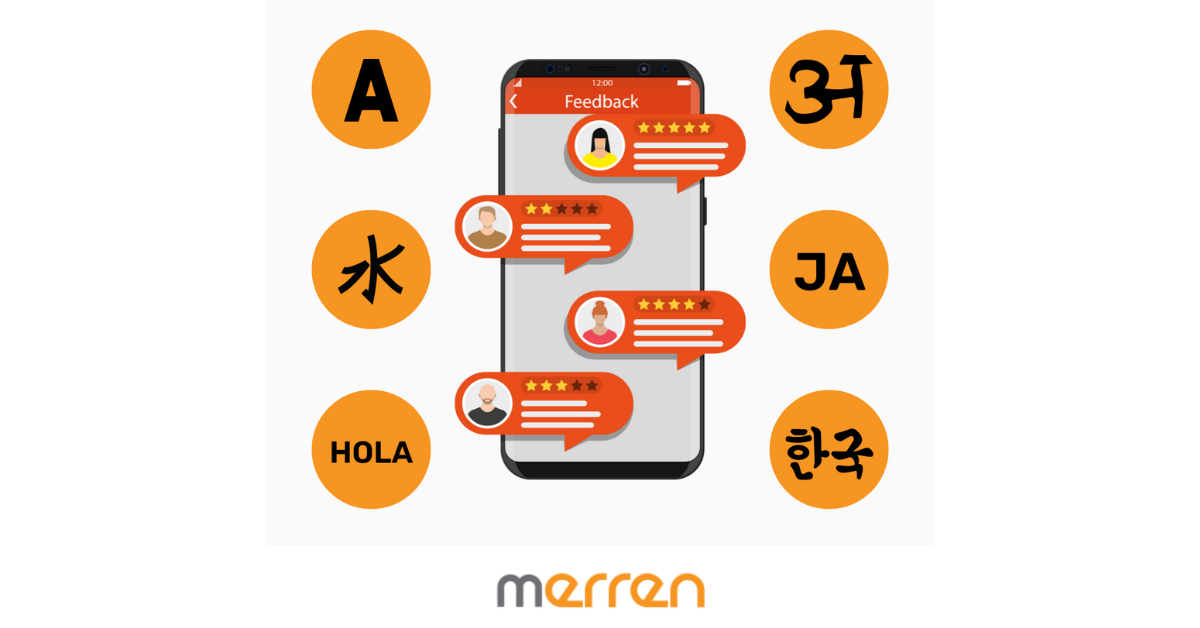In every business, there will be customer bases from different demographics and languages. However, collecting feedback from customers who speak different languages can be challenging. That’s where multilingual surveys come in. Multilingual surveys are surveys designed to collect customer responses in more than one language. In this blog post, we will be discussing the benefits of using multilingual surveys for customer feedback collection and how they can help you better understand your customers’ needs and preferences.
What are Multilingual Surveys?
Maintaining effective communication with customers is crucial in today’s globalized market. One major challenge faced by businesses is the language barrier that can hinder feedback collection. Multilingual surveys are an innovative solution to this problem as they allow businesses to reach a wider audience by offering surveys in multiple languages. By doing so, organisations can collect accurate and representative feedback from non-native speakers, gain insights into cultural differences, and understand customer preferences in different regions. Moreover, it shows customers that their opinions matter and that the business values their language needs, leading to improved customer satisfaction and loyalty.
Benefits of Multilingual Surveys for Customer Feedback Collection
Introducing multilingual surveys can provide businesses with several benefits for collecting customer feedback. Explore 6 benefits of offering this facility while bringing in insights from your target audience.
1. High quantity of responses
When customers provide feedback in their native language, they are more likely to provide thoughtful and accurate responses. This is where multilingual surveys play an essential role. By offering surveys in various languages, businesses can ensure that customers are comfortable and confident while providing feedback. This, in turn, leads to higher quality responses that are more representative of their opinions. Bringing in authentic opinions from your customers can be a boon if brands want a comprehensive understanding of customer expectations.
2. Higher response rate
Customers are willing to share their feedback- just not in one universal language. When we acknowledge the linguistic diversity of our customer base, we can bring in more responses from them. All with the facility of providing surveys in multiple languages. This way, you increase the chances of customers responding to your survey and obtain accurate results for your campaigns.
Customers are more likely to take a survey in their native language as it is more comfortable for them to respond.
3. Lower survey abandonment rate
Minimal response rate is the culprit of inaccurate data. Multilingual surveys can have a significant impact on reducing survey abandonment rates. This approach can help to minimize language barriers that might otherwise deter non-native speakers from participating. When customers are comfortable expressing themselves in their native language, there will be a higher response rate from that specific demography.

4. Improved customer relationship building
By offering surveys in multiple languages, companies can demonstrate that they value and respect the language and cultural preferences of their global audience base. This inclusivity can lead to a better understanding of customer needs and preferences. Moreover, multilingual surveys reduce the risk of miscommunication leading to more accurate and useful feedback. By taking this approach, businesses can also stand out as leaders in diversity and inclusivity- qualities that resonate with many modern-day customers seeking brands that align with their values.
5. Helps identify opportunities
Multilingual surveys can help companies identify opportunities for growth and improvement within the specific language-speaking communities. This information can be used to tailor marketing strategies and product offerings to better meet the needs of diverse customer groups. Multilingual surveys can also help identify areas of improvement in terms of language accessibility. Brands can identify patterns and trends for that particular market and offer personalized solutions.
6. Competitive advantage
Catering to customers and seeking feedback in multiple languages is better than reinforcing a default language code across the customer base (example assuming the use of english surveys for French and Spanish speakers). This gives organisations a competitive advantage over survey tools that only offer one or very limited language translations. Deploying surveys in different languages, brands will not leave any target market behind. This can only happen with multilingual surveys.
Best Practices for Creating Multilingual Surveys
Introducing best practices for creating multilingual surveys can ensure accuracy, cultural sensitivity, and a higher response rate. It is essential to determine the target audience, use professional translation services, and ensure clear and concise questions in all languages included. By following some best practices, businesses can gather valuable feedback from a wider range of customers and improve their internal processes:

Identify the target audience
This includes understanding the language preferences and cultural nuances of the specific communities you are surveying. By identifying your audience, you can tailor your questions and survey design to ensure that your message is clear, concise, and culturally sensitive. This can also be done prior to launching feedback protocols by thoroughly revisiting your customer profile.
Use a professional translation tool
A well equipped translation tool should have plenty of language options. While creating a single template, make sure you can translate survey questions into the preferred language for specific survey respondents. Merren offers this facility of seamless translation into any language for your customers be it India, China, France or Germany- you name it.
Ensure questions and simple language
Avoid using complex language or technical jargon, as this may cause confusion or lead to inaccurate responses. Jargons may not be well translated via most translation software. This can cause confusion among respondents. Use simple language that is easy to understand for all respondents.
Allow for open-ended responses
Open-ended responses can provide valuable insights and allow customers to express their opinions in their own words. This will help to capture more nuanced feedback and ensure that respondents can express themselves fully.

Demo test surveys before launch
When you demo test translated questionnaires, you can identify any errors in translation file, formatting, survey language, and device compatibility (browser, email, messenger apps). Marketers can launch smaller feedback forms among a target group before sending out the survey to a wider audience. It also provides an opportunity to receive feedback from a small group and make improvements based on their input.
Consider the survey platform
Choose a robust platform that offers flawless translation and a dashboard that can analyze results in real time based on different filters. Merren uses Google APIs to auto-translate the surveys. The supported languages include Spanish, Arabic, Hebrew, French, Hindi and much more. Once translated, Merren users can also review and edit translations as needed. This system of Google translate is more methodical and accurate over a human translator. This facility can help any team of people develop relevant marketing strategy across campaigns.
Provide instruction in multiple languages
It will be unfair to assume that all your respondents would know how to complete the survey till the end. To prevent churn during completion process, provide brief, clear and concise instruction in the respective language. This will ensure the feedback gets completed and respondents don’t feel lost.
Conclusion
If you want to create an online survey that can easily be translated into multiple languages, these are the considerations you need to take into account. Using a robust platform by Merren, organisations get access to multi-lingual survey tools, ready-made templates, easy to use navigation buttons, and a friendly interface for any marketing professional.
If you want to create a diversified survey, take the next step and try our features for free. Sign up here and use the 14 day free trial and see it for yourself.





